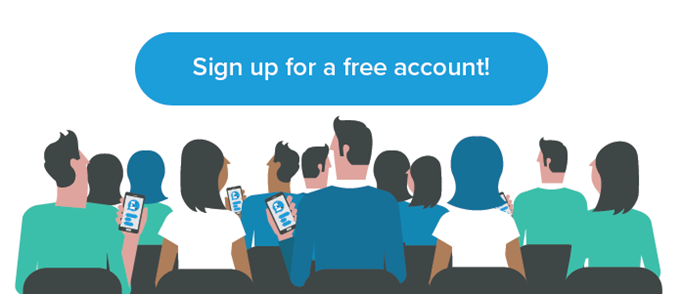With the new Vevox updates happening this week, I decided to grab a couple of minutes with the Vevox Product Manager, Matt Kelly, to discuss what this next release means for our customers.
Ben Waugh: Hi Matt, so with the new Vevox update taking place this week, why should our customers be interested in this update?
Matt Kelly: Hi Ben, so these new features that will be added to Vevox this week, are updates that quite a few of our customers have mentioned as features they would like to see in the platform. Their feedback was that these two features are key to improving their Vevox experience, be that for a lecture, large conference, internal meeting or training session. We are pleased to be responding with these features for them and enhance their experience with Vevox. One of the features, ‘Open Text Poll’ is exciting as it gives our users the ability to use a new poll type which can enable them to gather qualitive data, in the moment and with ease.
This focussed poll type makes it more simple for the lecturer or presenter to access more qualitative feedback and being able to view a participant’s own defined answer to a poll, as opposed to participants choosing an answer to a multiple-choice poll and pre-defined list. The other update is the ability to sort by 'likes’. This means that our Vevox users will be able to display the ‘most liked’ messages at the top of the message board or projector. This makes it easy for the presenter to see what questions should be focussed on in the session and what ideas or topics are popular with the audience.
BW: So how do these features work?
MK: We always try to focus on making new features as easy as possible to use when developing them. With regards to the open text poll, you can now choose this poll type in the dashboard when inserting a poll, then you create your question title and push this our this out to your participants for them to send in their own answers.
We have added the option to sort by 'likes’ in the dashboard and projector, so now presenters can choose to display what are the most popular questions or messages. There is a dynamic functionality to this feature and messages can jump up or down the message feed based on the number of 'likes'. There is also the ability for presenters to lock the message board and this will freeze the dynamic functionality, allowing presenters to view specific key messages and to pause the animated messages for however long they need. This lock function can easily be turned on or off and the message board will update itself automatically when it has been unlocked.
BW: What upcoming update are you excited about most?
MK: One feature that it is being developed and links nicely with the open text poll, is the ability to produce a word cloud display based on the results of an open text question. This gives the presenter and audience alike, an instant gratification and visual representation of all the responses. This is another feature that our customers have asked for and we are excited to have this in line for one of our next releases.
BW: How do you get an understanding of what matters to our customers?
MK: We have lots of communication channels that allow customers to give us feedback and suggestions on ways to improve Vevox. We receive feedback from several ways such as our Support Center, Customer Success Team, Vevox Advocates and via email, phone, Vevox webinars, website and social media channels. This feedback is essential for us to understand what features would really add value to customers and help shape the future of Vevox.
BW: Other than customer feedback, what other factors influence Vevox’s development?
MK: The team is full of ideas, some great, some crazy! One of the things we strive for is to ensure we are also outwardly focussed and reflecting how people behave and interact in their lives. Where features, user interfaces and overall user experience are concerned we take influence from wide ranging sources including social media, business management platforms and the apps that are now default tools for day to day life. The benefit of embracing behaviours that people have already learnt and display impacts the adoption and satisfaction rates. The ‘learning’ process is minimised or cut out completely for users and they can gain value from it from the get-go.




